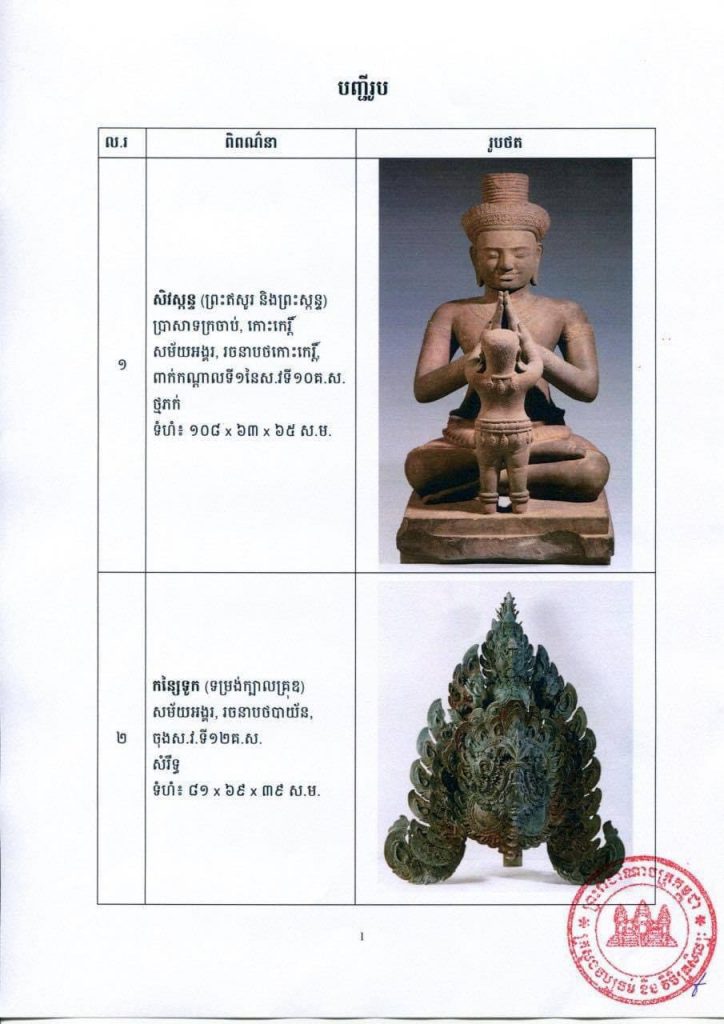Collector Douglas Latchford’s daughter has turned over his entire collection—as well as records that could lead to further recoveries from US institutions
The restitution of Douglas Latchford’s Khmer art collection to Cambodia, announced six months after his death by his daughter and first reported by the New York Times, follows years of secret negotiations. But, according to information provided to The Art Newspaper by those involved, the deal struck with Cambodia does not end the US federal investigation into Latchford’s business operations. Considering that the Cambodians have been promised access to his archives, and would be able to share their content with the US authorities, it might even renew pressure on US museums and collections that acquired art pieces from the prominent dealer and collector to examine their provenance more closely.
Douglas Latchford, a dual citizen of the UK and Thailand, died in Bangkok on 2 August, aged 88, eight months after he was indicted by the US Attorney’s Office in New York’s Southern District for his alleged role in trafficking Southeast Asian antiquities since the 1970s. Now his daughter, who prefers to use her Thai name Nawapan Kriangsak to protect her family’s privacy, has agreed to turn his collection over to Cambodia in stages.
“The entire collection,” she confirms, “is now the property of Cambodia, including the most valuable items which have been in storage in the UK. This includes many items with clear provenance, bought from auction houses or collections all over the world, as well as those with an unreliable provenance. And it also includes works which belonged to my father, but may be held by third parties. All of it is going home.”
As a preliminary gesture, Kriangsak arranged for Cambodian officials to view the collection in Bangkok and she subsequently delivered 25 pieces to them. Five other major sculptures are being shipped from the UK to the National Museum in Phnom Penh, including a sandstone figure of Shiva and Skanda, which was featured on the cover of Adoration and Glory, the publication Latchford co-authored with the scholar Emma Bunker. Cambodian authorities are especially keen to retrieve such pieces, which are believed to come from the temple complex at Koh Ker, briefly the Khmer capital during the tenth century.
In Phnom Penh, culture minister Phoeurng Sackona celebrated this “historical event”, which will see more than 100 stone statues and dozens of minor artefacts returned to Cambodia, as per an agreement signed on 18 September. The collection will be exhibited at a new extension planned by the National Museum. The minister also praised “the invaluable contribution of the US authorities”, which “heralds strong prospects of future co-operation”.
“We have come a long way to reach this agreement,” Kriangsak acknowledges. “Cambodia had already discussed the return of artefacts with Douglas Latchford,” says Bradley Gordon, an American attorney representing the kingdom, “but the situation changed when his daughter decided to return the entire collection, without exception, irrespective of provenance.” He adds that, in the past three years of discussions, Kriangsak has never asked for immunity in return, nor requested her father be cleared of any wrongdoing.
READ FULL STORY- THE ART NEWSPAPER

